by Lauren Kramer
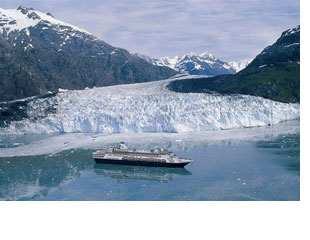 With a deafening roar, a 600-pound chunk of ice breaks suddenly from the edge of the tidal glacier and plunges with a ginormous splash into the ocean.”You’ve just seen an iceberg calving, folks,” comes a too-cheerful voice from the loudspeaker of Holland America’s Zuiderdam, which, at this moment, is cruising in an Alaska waterway known as Glacier Bay. Snow-capped mountains soar into the sky and blue-tinged tidal glaciers stretch as far as the eye can see.
With a deafening roar, a 600-pound chunk of ice breaks suddenly from the edge of the tidal glacier and plunges with a ginormous splash into the ocean.”You’ve just seen an iceberg calving, folks,” comes a too-cheerful voice from the loudspeaker of Holland America’s Zuiderdam, which, at this moment, is cruising in an Alaska waterway known as Glacier Bay. Snow-capped mountains soar into the sky and blue-tinged tidal glaciers stretch as far as the eye can see.
Around me, people with cameras and binoculars pressed to their faces are exclaiming in wonder. “What a sight!” I hear someone say. “Isn’t that amazing!”
Three miles away from that calving glacier, our cruise ship is drifting while its captain carefully avoids the minivan-sized chunks of floating ice that surround us.
“If we were in the way of that calving iceberg, it could easily sink the ship,” Captain Werner Timmers confesses to me later from the Bridge, where he and a handful of finely uniformed navigation officers control the direction and speed of the 3,082-person-capacity vessel.
 I am glad for his sharp wits, for despite the day’s bright sunshine, I have no inclination to go swimming. Fall overboard in this water, its temperature hovering at the freezing point, and hypothermia would kill you within two-to-four minutes. “The lifejackets are only there to help identify and locate the bodies,” a passenger quips.
I am glad for his sharp wits, for despite the day’s bright sunshine, I have no inclination to go swimming. Fall overboard in this water, its temperature hovering at the freezing point, and hypothermia would kill you within two-to-four minutes. “The lifejackets are only there to help identify and locate the bodies,” a passenger quips.
There are parts of Alaska, such as this inside passage of Glacier Bay, that are pristine, untouched by human hands and breathtakingly beautiful. But there are also parts of the landscape where gift shops, restaurants and souvenir stores are ubiquitous, and the shopping landscape looks much like many American small towns.
Skagway, Alaska is one such place. The historic gold rush city that forms one of the major ports of call for many massive cruise lines including Holland America, Skagway has been completely transformed since cruise ship passengers began walking off the gangplank in the 1980s.
“Tuesdays and Thursdays are big days for us,” confesses Carlin “Buckwheat” Donahue, who heads up communications for the Skagway CVB. “Some days we get 9,000 tourists coming into town.”
The city wasn’t always flooded with tourists. In 1982, the closure of a major ore mine left Skagway in a state of economic depression, with an unemployment rate of 60 per cent.
“It was devastating for us,” Buckwheat reflects. “We looked at the opportunities, and decided to actively start courting the cruise lines.”
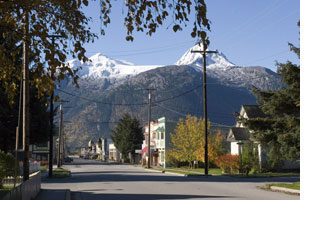 The courtship worked, and the arrival of the ships brought a revival to Skagway, with new stores and an influx of 1,800 new summer workers to man the tourism boom. “We went from economic depression to having the highest income in the state,” Buckwheat says.
The courtship worked, and the arrival of the ships brought a revival to Skagway, with new stores and an influx of 1,800 new summer workers to man the tourism boom. “We went from economic depression to having the highest income in the state,” Buckwheat says.
That has brought changes, good and bad. For one, only 16 of the 80-odd stores on the main strip of Broadway Street are now locally owned, the majority of them multi-national chains selling gifts and jewelry.
An hour after the last cruise ship pulls away from the dock in September, 80 per cent of the city’s stores are closed and boarded up for the next seven months. “This city undergoes an amazing transformation then,” says Buckwheat, with more than a trace of irony.
One attraction that draws most visitors to Skagway is the White Pass & Yukon Route train. Passengers embark on a three hour ride on a route that snakes around the mountain curves, teetering close to the edge of many precipices.
The history of the railroad parallels the history of Skagway, so more than a relaxing way to appreciate the scenery, this railroad trip gives visitors insight into the city’s genesis and development.
It began in the 1890s with the discovery of gold, when tens of thousands of prospectors, the vast majority highly inexperienced in the area’s somewhat hostile terrain, tried to get to the Klondike to make their fortunes.
The steep valleys we pass along the way hold the bones of 3,000 unfortunate horses, for whom the torturous trail at the turn of the century proved deadly.
By 1900 the railway’s 110 miles of track were completed, not without a few fatalities. We pass a massive boulder, and are told of two railway workers who were crushed to death beneath it while toiling on the railroad. No-one was ever able to move the boulder, so their remains are interred in the same place they met their end.
We learn, on the journey, that of the 100,000 prospectors who tried to reach the Klondike gold fields, less than half made it there and only 4,000 of them found gold.
But though they left Skagway to seek greener pastures, the railroad built to help them get there continues to this day, with a long, endearing history.
For the past 100 years, it has been an economic lifeline to Skagway, transporting the gold mining operations of the first stampeders and later assisting the large corporations who control mining in the Klondike.
The railroad closed for six years in 1982, when world metal prices plummeted and the mines closed. But by 1988, the trains were hurtling merrily along the tracks once again, this time as a narrow gauge excursion railroad for Skagway visitors.
It is a relief, though, to clamber back on the ship after a full day of sightseeing and touring, and to surround yourself with the familiarity of its 11 decks.
Dusk is settling in as we pull away from port, and within hours, we are surrounded by heavily forested mountains, waterfalls tumbling from great heights down their steep slopes.
As the melancholy sound of the ship’s horn fills the air, we disappear into the misty night.
About the author:
This week Traveling Tales welcomes freelance travel writer Lauren Kramer, who lives in Richmond, a suburb of Vancouver, B.C.
About the photos:
1: Holland America’s Zuiderdam in Glacier Bay. Holland America photo.
2: Passengers up and close to the glacier face. Holland America photo.
3: Snow-capped peaks form a backdrop for Skagway. Photo by Andrew Cremata for Skagway CVB.
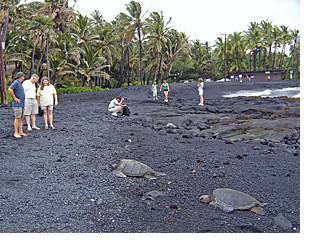
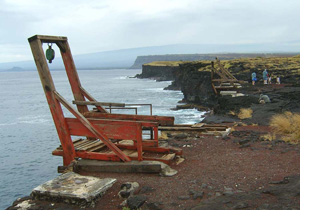 Near these wooden platforms, azure-blue seawaters surge up the sides of a puka in the lava…and gently recede. With meticulous timing, divers leap into this deep hole, ride through the lava tube into open ocean…climbing back up the cliff on rusty ladders…
Near these wooden platforms, azure-blue seawaters surge up the sides of a puka in the lava…and gently recede. With meticulous timing, divers leap into this deep hole, ride through the lava tube into open ocean…climbing back up the cliff on rusty ladders…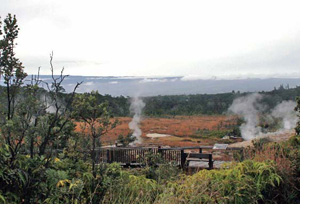 Billowing volcanic gasses seep from the ground, enshrouding treeless landscapes and depositing acid-yellow crystals on surrounding rocks. Returning atop the crater’s rim, countless steamy vents cloak purple-pink orchids and vegetation with a swirling, ghostly mystique.
Billowing volcanic gasses seep from the ground, enshrouding treeless landscapes and depositing acid-yellow crystals on surrounding rocks. Returning atop the crater’s rim, countless steamy vents cloak purple-pink orchids and vegetation with a swirling, ghostly mystique.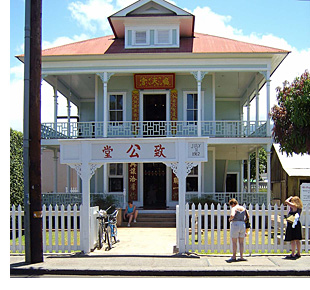
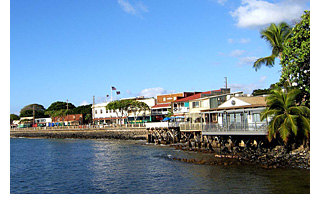 Pointing northward to Kahekili Beach Park, she continued, “Warriors trained there…and Hawaiians launched their koa-wood canoes to visit Lanai.” Also nicknamed Airport Beach, old airstrip fragments remain off in the bushes. “The terminal’s Windsock Bar was well-known by travelers between 1960 and 1987 for great Bloody Marys,” Keli’i winked.
Pointing northward to Kahekili Beach Park, she continued, “Warriors trained there…and Hawaiians launched their koa-wood canoes to visit Lanai.” Also nicknamed Airport Beach, old airstrip fragments remain off in the bushes. “The terminal’s Windsock Bar was well-known by travelers between 1960 and 1987 for great Bloody Marys,” Keli’i winked.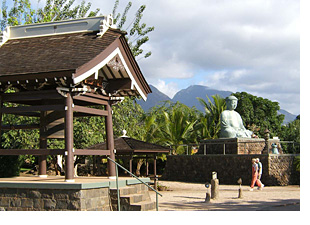 Back at Banyan Park’s southwest corner, fort remnants from 1831 endure, originally built after raucous sailors lobbed cannonballs into town, disputing with missionaries over Hawaiian women visiting their ships. Demolished twenty years later, hand-cut coral blocks from its 20-foot-high walls built the jail standing at Prison and Waine’e Streets.
Back at Banyan Park’s southwest corner, fort remnants from 1831 endure, originally built after raucous sailors lobbed cannonballs into town, disputing with missionaries over Hawaiian women visiting their ships. Demolished twenty years later, hand-cut coral blocks from its 20-foot-high walls built the jail standing at Prison and Waine’e Streets.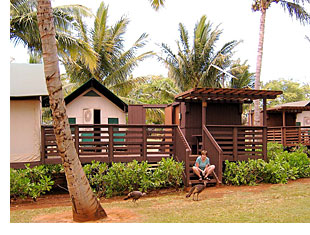
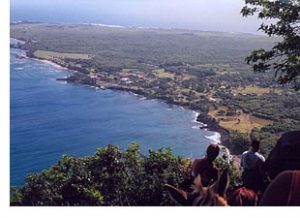 Soon after mounting mules we zigzag down the 3.8-mile trail into Kalaupapa for a closer look. Winding under forested canopies, descending 1700 feet and rounding 26 switchbacks, mules carry us steadily downward on stony steps and onto sunny ledges. While my mule Elvira chomps lacy fern, I feast on spectacular panoramas. Ultimately we pass a white bark kukui nut tree grove where black feral goats rummage as we continue along a wide black sand beach.
Soon after mounting mules we zigzag down the 3.8-mile trail into Kalaupapa for a closer look. Winding under forested canopies, descending 1700 feet and rounding 26 switchbacks, mules carry us steadily downward on stony steps and onto sunny ledges. While my mule Elvira chomps lacy fern, I feast on spectacular panoramas. Ultimately we pass a white bark kukui nut tree grove where black feral goats rummage as we continue along a wide black sand beach.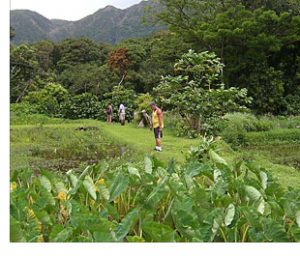 Bananas, guava trees and papayas line a gradually rising pathway. Aki proudly shows us sixteen taro patches, reestablished after clearing a forty-year growth of brush and trees. Upriver, his taro cooperative built a dam high enough to divert water to life-sustaining taro channels. We ford the knee-deep river below the reservoir and trek a muddy meandering trail into dense forest.
Bananas, guava trees and papayas line a gradually rising pathway. Aki proudly shows us sixteen taro patches, reestablished after clearing a forty-year growth of brush and trees. Upriver, his taro cooperative built a dam high enough to divert water to life-sustaining taro channels. We ford the knee-deep river below the reservoir and trek a muddy meandering trail into dense forest.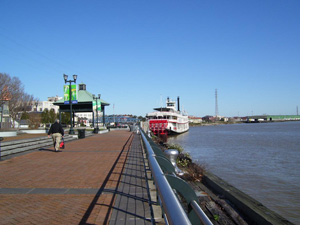
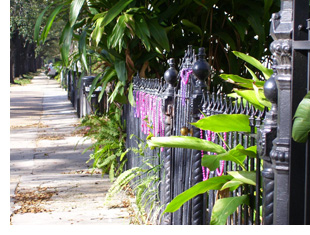 My fears began to subside, as the taxi entered the French Quarter. It seemed almost untouched from the days, years ago, when I would ride the ferry across the Mississippi and spend a day or evening walking the streets, eating amazing food, and listening to the magic of native New Orleans jazz.
My fears began to subside, as the taxi entered the French Quarter. It seemed almost untouched from the days, years ago, when I would ride the ferry across the Mississippi and spend a day or evening walking the streets, eating amazing food, and listening to the magic of native New Orleans jazz.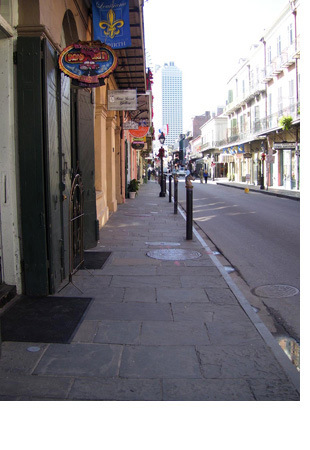 Jackson Square remained much as I remembered it. We walked the square and stopped to visit with the hack drivers who provided horse-drawn guided tours of the Quarter until we selected the one who would be our guide.
Jackson Square remained much as I remembered it. We walked the square and stopped to visit with the hack drivers who provided horse-drawn guided tours of the Quarter until we selected the one who would be our guide.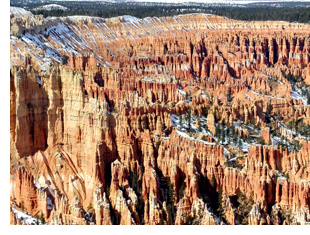
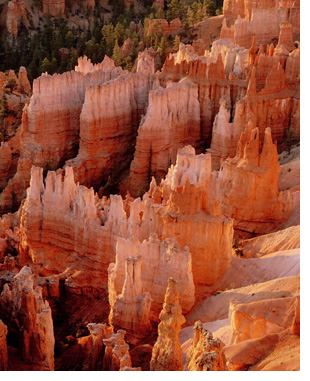 Towering Ponderosa pines, high elevation meadows and fir-spruce forests that border the plateau rim abound with wildlife. Scientists say that this area boasts some of the world’s best air quality. It also offers panoramic views of three states with nearly 200 miles of visibility.
Towering Ponderosa pines, high elevation meadows and fir-spruce forests that border the plateau rim abound with wildlife. Scientists say that this area boasts some of the world’s best air quality. It also offers panoramic views of three states with nearly 200 miles of visibility.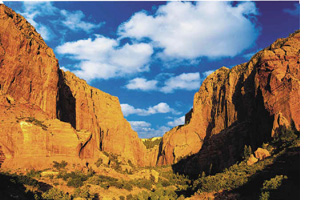 The best way to experience Zion’s massive canyons walls that soar skyward is to walk among the towering cliffs or through small narrow canyons. These unique sandstone cliffs range in color from cream, to pink and red and have been described as sand castles crowning desert canyons.
The best way to experience Zion’s massive canyons walls that soar skyward is to walk among the towering cliffs or through small narrow canyons. These unique sandstone cliffs range in color from cream, to pink and red and have been described as sand castles crowning desert canyons. My family and I start the day with a canoe ride at the creek, dipping oars into the shallow, murky water of the Brazos River and watching the occasional fish somersault into the air before returning to the shallows.
My family and I start the day with a canoe ride at the creek, dipping oars into the shallow, murky water of the Brazos River and watching the occasional fish somersault into the air before returning to the shallows.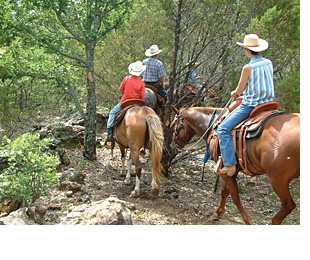
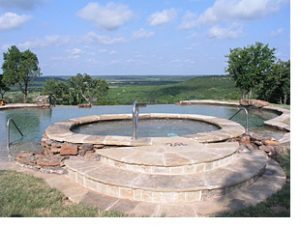 Back at the ranch there is a wide array of uniquely Texan activities to keep us busy. Jason, my five-year-old son, takes a stab at archery with his dad, while I peruse other possibilities, among them skeet shooting, fishing and hunting.
Back at the ranch there is a wide array of uniquely Texan activities to keep us busy. Jason, my five-year-old son, takes a stab at archery with his dad, while I peruse other possibilities, among them skeet shooting, fishing and hunting.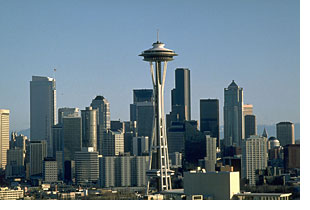
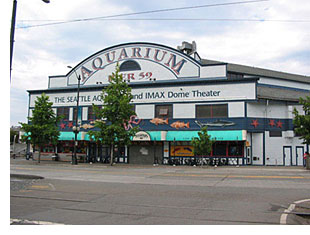 Since Puget sounds plays such a large role in Seattle’s geography it is no wonder that there are many water activities for the visitor. Argosy Cruises is Seattle’s largest water sightseeing tour operator and there are dinner and lunch excursions as well.
Since Puget sounds plays such a large role in Seattle’s geography it is no wonder that there are many water activities for the visitor. Argosy Cruises is Seattle’s largest water sightseeing tour operator and there are dinner and lunch excursions as well.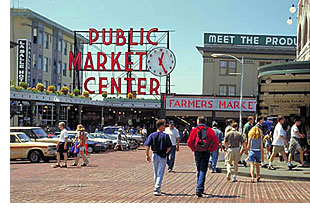 The Seattle Center is where the 1962 World’s Fair actually took place and now it is a 74-acre park with museums, theatres and other attractions that constantly draw crowds. Make your way to the waterfront since it’s a treat to watch the ferry boats, luxury cruise liners and sightseeing tour boats all move around at once.
The Seattle Center is where the 1962 World’s Fair actually took place and now it is a 74-acre park with museums, theatres and other attractions that constantly draw crowds. Make your way to the waterfront since it’s a treat to watch the ferry boats, luxury cruise liners and sightseeing tour boats all move around at once.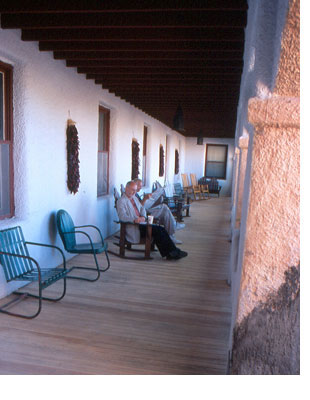
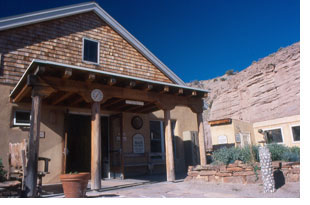 Heading back down the switchback, I paused to enjoy the view and shoot some photos. Anticipating a reward for my exertions, I had a relaxing massage booked to help me unwind. Following supper, I planned to enjoy the spa’s naturally hot mineral pools to further reduce me to a mass of human Silly Putty.
Heading back down the switchback, I paused to enjoy the view and shoot some photos. Anticipating a reward for my exertions, I had a relaxing massage booked to help me unwind. Following supper, I planned to enjoy the spa’s naturally hot mineral pools to further reduce me to a mass of human Silly Putty.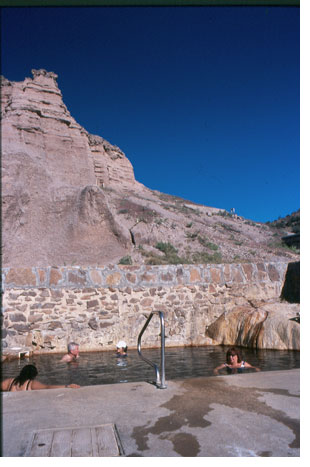 There is nothing quite so invigorating, yet at the same time totally relaxing, as taking the waters in a hot mineral pool at night, watching the desert stars come out to sprinkle the darkening skies with their twinkling brightness.
There is nothing quite so invigorating, yet at the same time totally relaxing, as taking the waters in a hot mineral pool at night, watching the desert stars come out to sprinkle the darkening skies with their twinkling brightness.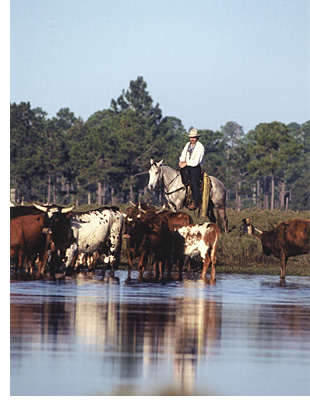
 With a broad sweep of his arm, he pointed out a peculiar natural phenomenon, open spaces shaded by heavy clumps of Spanish moss hanging in surreal patterns from the branches of ancient spreading oak trees “We call these places hammocks.” he told us,” its and old Indian word, means shade and comfort. The oaks have outlived the pine, but if there is a fire, the oaks burn and pines don’t. Fire in the forest is nature’s way of cleaning it up.”
With a broad sweep of his arm, he pointed out a peculiar natural phenomenon, open spaces shaded by heavy clumps of Spanish moss hanging in surreal patterns from the branches of ancient spreading oak trees “We call these places hammocks.” he told us,” its and old Indian word, means shade and comfort. The oaks have outlived the pine, but if there is a fire, the oaks burn and pines don’t. Fire in the forest is nature’s way of cleaning it up.”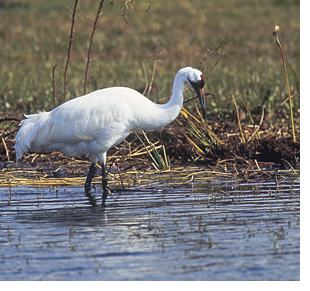 This was a first sighting for one of our group and he happily added this rare bird to his life list. We spied stately cormorants, green backed herons, a crested cara cara, black ducks, osprey and a shy limpkin. “People come from all over the world to site just one of our birds. That’s a birder for you.”
This was a first sighting for one of our group and he happily added this rare bird to his life list. We spied stately cormorants, green backed herons, a crested cara cara, black ducks, osprey and a shy limpkin. “People come from all over the world to site just one of our birds. That’s a birder for you.”